Our two hour drive from Agrigento to Palermo on the northern coast of Sicily was pleasant and relaxed.
Rolling green hills intercepted by occasional volcanic plugs, limestone outcrops, lush ripening maize crops and masses of flowering red clover made for a most picturesque backdrop to the excellent highway along which we travelled. Heavily flowering, swaying eucalyptus species, white cedars and acacias caressed the hill sides, colourful wild flowers bloomed and fat sheep and cattle grazed brilliant green pastures. Spring had really sprung in middle Sicily.
Large white stone rural houses reflected the obvious prosperity of the region. Acres of enormous wind mills stood proudly on the surrounding hill sides, their giant arms soaring in the brisk afternoon breeze. You may gather by now that I am an avid fan of wind farms.
We were very impressed with the Sicilian road houses. Unless we were desperate - and we have never been that desperate so far - we would never dream of eating at an Australian road house. However, unlike those in our home country, the facilities in Sicilian road houses were spotless and the food was excellent. None of the plastic pre-cooked food and plastic plates here. We thoroughly enjoyed dining on rustic bread rolls, with grilled eggplant, tomatoes, mozzarella and olives. Much to our surprise we were to find that throughout Sicily and especially our travels in rural Morocco, the road house food was really very good.
Carmelo entertained us during our drive to Palermo, providing us with his own life experiences and a glimpse into the culture and real life of the Sicilian people. We grinned as he would frequently end his discussions in his broad Sicilian accent "Wearlllll, it is aaaarfter all the Siciliiiiaaaan Wai......" while extending his right arm as if to accentuate a certain point.
Carmelo was sadly despondent about the general Sicilian economy and the prospects for the younger generation. The bleak combination of routine political corruption, ongoing mafia intervention, gross misuse of EU funds and the culture of Sicilian peoples living beyond their means had fueled fears that Italy will like Greece, be led to the brink of an abyss of economic gloom.
At 14% unemployment and around 18% in rural regions, Sicily today has one of the highest unemployment rates in Italy. It is much worse for the youth with almost 30% of those under 24 years and 28% of those under 35 years, being unemployed.
As just tourists gaining a mere snapshot into Sicilian life, it certainly did not appear that Sicily was going broke. As in Catania, people were very fashionably dressed, there were masses of sleek expensive motor vehicles and well, it seemed that everyone - especially the very young - frequented popular cafes and coffee shops and in the evenings the restaurants and cafes were often fully booked. "Ahh, that is the problem" explained Carmelo. "The people do not accept the economic situation. They still have big houses, parties and weddings. They just borrow the money to do so. It is all about keeping up appearances".
The alarming increase in refugees entering Italy has further fueled local anger with the Italian government. A 2014 United Nations High Commission for Refugees (UNHCR) report documents that asylum seeker applications in Europe in general rose by a massive 25% compared with the year of 2013. In the first seven months of 2014, more than 87,000 people arrived in Italy by sea, mainly from Eritrea and the Syrian Arab Republic. Sicily because of its southern location and proximity to Africa, has born a large amount of the brunt of immigration receiving over 5,000 refugees in just one day alone in November 2014. It is currently estimated that a staggering one million refugees are massing on the African coastline, desperate to gain asylum in southern Europe.
You would have to be impressed with the generosity of the Italian government toward the refugees. In an effort to reduce the risks associated with dangerous sea voyages, in October 2013 the Italian government launched the Mare Nostrum operation involving the significant deployment of naval and air force resources, which up until the end of 2014 had rescued more than 100,000 people at sea. Unfortunately, the Italian economic situation has understandably impacted on the capacity of the country to accommodate such huge numbers of asylum seekers and sadly local anger has developed in some cases into xenophobia and violence.
As foreigners, we could well understand the impossible Sicilian, and indeed the entire European refugee situation. The conversation struck a raw nerve with us. It was a stark reminder of our home country of Australia's uncompassionate attitude to our asylum seeker situation*. We are deeply ashamed of our government's stand, its constant reference of people arriving by boats and seeking asylum protection in Australia as "illegal immigrants", its inhumane mandatory detention policies (including children) and its sledge hammer policy of "Stop the Boats" at all costs - including shameful acts of sending sea stricken asylum seekers back to their port of embarkation to fare on their own. It is of course an indictment on all Australians and in our democratic society, sadly reflects the opinions and wishes of the majority of our citizens.
*Australia is by all standards a wealthy and very fortunate nation. We have no borders with other countries and we are far from major conflicts. In comparison with other countries, Australia has relatively few people seeking asylum - around 2.2% and just a minute fraction of the total number of asylum seekers worldwide at any time (UNHCR publication January 2014).
We were pleased to move on to another conversation. We remarked on the large size of the rural houses and that curiously all had their curtains or shutters drawn. Carmelo laughed, explaining that the houses are generally around 200 to 300 square meters and must look like a luxury apartment inside. Furthermore, it was vitally important that a family must be able to receive visitors, especially family, at any time. The refrigerator must be always fully stocked and the house must be spotlessly clean. It seemed to us that the women got a pretty raw deal in the cleaning and food preparation business. It also seemed evident that despite how tough the economic situation was for the people, that it was all about keeping up appearances, an amazing culture of generosity and hospitality - and of course in keeping with the "The Sicilian Way".
We didn't really understand the significance of the drawn curtains. Perhaps it was to keep those intrepid visitors away?
Despite the seeming absurdities, we decided that we liked the Sicilian Way. We were enjoying Sicily and so far had very much related to the local people, their sense of fun and zest for life. We concluded also that the Sicilian younger generation women would not put up with too much house work, unrealistic demands for hospitality and the crazy culture of "keeping up appearances".
We arrived in Palermo late in the afternoon. Our first glimpses were of the beautiful marina with its striking array of brilliant white yachts and the lovely Palermo Bay, followed by a brief orientation tour of the city.
Our Grand Hotel Villa Igiea was aesthetically beautiful. Located on the bay side and overlooking the immense marina, this five star hotel was truly luxurious. Originally an old family mansion, the building was faithfully restored in the late 19th century by Nouveau Architect Ernesto Basile for the wealthy Florio family, including the preservation of original frescoes, furniture and decor.
Whilst we could not fault the appearance of the hotel, the staff during our check in looked unhappy, and were unfriendly - almost terse. Perhaps, like the Grand Hotel Excelsior in Catania, there could have been management problems or uncertainty of staff tenure. Whatever the problem, we had the distinct impression that as guests we were no more than a mere commodity; a great shame for such a magnificent hotel. Furthermore, we had booked a superior room but were slightly disappointed that it was located on the side of the building rather than overlooking the bay. The room was well appointed, if a bit gloomy with very heavy curtains and dim lighting.
The manicured gardens and external facilities of the hotel however were fabulous, with lovely terraces and outside bars and sitting areas overlooking the splendid bay. We were most impressed with the Greek styled swimming pool with its "historic ruins". It was a truly delightful setting.
In the late shadows of the afternoon, we thoroughly enjoyed some Italian Nastro Azzuro beer on the outside terrace. Like all drinks served at hotels in Sicily it was accompanied by welcome large bowls of olives, almonds and potato crisps. It was indeed difficult not to overindulge on these moreish snacks.
Carmelo had recommended the nearby restaurant "La Staffa" which proved to be a great choice. Although none of the staff spoke any English, the friendly owner on greeting us, promptly organised for an obliging English speaking patron to assist. It was all very warm and friendly and we thoroughly enjoyed our Lobster Fettucine in Brandy Cream Sauce which we agreed was arguably the best meal we had eaten since arriving in Sicily. It was a very lovely evening at a very charming restaurant.
Ristorante 'La Staffa" is located at Via Belmonte, 2, Acquasanta, Palermo. Telephone: 091544003.
Agrigento to Palermo - The Sicilian Way.......
Friday, May 09, 2014
 Palermo, Sicily, Italy
Palermo, Sicily, Italy
Other Entries
-
1Introduction - In Search of Macke's Donkey
May 018 days prior Crowdy Head, Australiaphoto_camera4videocam 0comment 0
Crowdy Head, Australiaphoto_camera4videocam 0comment 0 -
2A Pastel Morning - Our Journey Begins
May 027 days prior Sydney, Australiaphoto_camera13videocam 0comment 0
Sydney, Australiaphoto_camera13videocam 0comment 0 -
3Voyage Shanghai
May 036 days prior Shanghai, Chinaphoto_camera13videocam 0comment 0
Shanghai, Chinaphoto_camera13videocam 0comment 0 -
4A Close Connection or Catatonic in Catania
May 045 days prior Catania, Sicily, Maltaphoto_camera5videocam 0comment 0
Catania, Sicily, Maltaphoto_camera5videocam 0comment 0 -
5"Long Legged Italy Kicked Poor Sicily....."
May 045 days prior Catania, Italyphoto_camera6videocam 0comment 0
Catania, Italyphoto_camera6videocam 0comment 0 -
6Under the Spell of Mt Etna
May 054 days prior Catania, Italyphoto_camera31videocam 0comment 0
Catania, Italyphoto_camera31videocam 0comment 0 -
7Historic Neapolis OR "A Body Floats in a Fluid..."
May 063 days prior Syracuse, Italyphoto_camera11videocam 0comment 0
Syracuse, Italyphoto_camera11videocam 0comment 0 -
8Idyllic Ortygia: Of Legends and Nymphs
May 063 days prior Syracuse, Italyphoto_camera7videocam 0comment 0
Syracuse, Italyphoto_camera7videocam 0comment 0 -
9Images of Gorgeous Ortygia
May 072 days prior Ortygia, Italyphoto_camera15videocam 0comment 0
Ortygia, Italyphoto_camera15videocam 0comment 0 -
10"And the Mountains Danced As If Drunk......"
May 072 days prior Agrigento, Italyphoto_camera19videocam 0comment 0
Agrigento, Italyphoto_camera19videocam 0comment 0 -
11"Akragas - Most Beautiful City Mortals Ever Built"
May 081 day prior Agrigento, Italyphoto_camera16videocam 0comment 0
Agrigento, Italyphoto_camera16videocam 0comment 0 -
12A Quaint Little B & B Called the Antichi Catoi
May 081 day prior Agrigento, Italyphoto_camera8videocam 0comment 0
Agrigento, Italyphoto_camera8videocam 0comment 0 -
13Agrigento to Palermo - The Sicilian Way.......
May 09 Palermo, Italyphoto_camera8videocam 0comment 0
Palermo, Italyphoto_camera8videocam 0comment 0 -
14Photo Album of The Magnificent Grand Hotel Igiea
May 09later that day Palermo, Italyphoto_camera8videocam 0comment 0
Palermo, Italyphoto_camera8videocam 0comment 0 -
15Palermo: A Quilted History, A Fusion of Cultures
May 09later that day Palermo, Italyphoto_camera24videocam 0comment 0
Palermo, Italyphoto_camera24videocam 0comment 0 -
16Treasures of the Conca D'Oro: Monreale & Cefalu
May 09later that day Palermo, Italyphoto_camera16videocam 0comment 0
Palermo, Italyphoto_camera16videocam 0comment 0 -
17Farewell Sicily OR A Shaky Flight to Tunisia.
May 101 day later Tunis, Tunisiaphoto_camera5videocam 0comment 0
Tunis, Tunisiaphoto_camera5videocam 0comment 0 -
18Tunisia Profile: Phoenicians to the Arab Spring
May 112 days later Tunis, Tunisiaphoto_camera5videocam 0comment 0
Tunis, Tunisiaphoto_camera5videocam 0comment 0 -
19Tunis: A City of Brilliant White & Cobalt Blue
May 112 days later Tunis, Tunisiaphoto_camera21videocam 0comment 0
Tunis, Tunisiaphoto_camera21videocam 0comment 0 -
20Toward the Algerian Border: Destination Le Kef
May 123 days later Tunis, Tunisiaphoto_camera48videocam 0comment 0
Tunis, Tunisiaphoto_camera48videocam 0comment 0 -
21Tunis: Medinas, Mosques, Cafes & Razor Wire
May 134 days later Tunis, Tunisiaphoto_camera10videocam 0comment 0
Tunis, Tunisiaphoto_camera10videocam 0comment 0 -
22"If You Love Ladakh, You Will Just ADORE Morocco!"
May 145 days later Casablanca, Moroccophoto_camera18videocam 0comment 0
Casablanca, Moroccophoto_camera18videocam 0comment 0 -
23Morocco Profile: Ancient Berbers - The Arab Spring
May 156 days later Fes, Moroccophoto_camera4videocam 0comment 0
Fes, Moroccophoto_camera4videocam 0comment 0 -
24Meknes & Volubilis: The Beautiful People Go to Fes
May 156 days later Fes, Moroccophoto_camera25videocam 0comment 0
Fes, Moroccophoto_camera25videocam 0comment 0 -
25Fes: At Last Macke's Medina and the Elusive Donkey
May 167 days later Fes, Moroccophoto_camera29videocam 0comment 0
Fes, Moroccophoto_camera29videocam 0comment 0 -
26Across the Atlas: Auguste Macke's Mann mit Esel"!!
May 178 days later Midelt, Moroccophoto_camera25videocam 0comment 0
Midelt, Moroccophoto_camera25videocam 0comment 0 -
27Tribulations of the Trilobites
May 189 days later Midelt, Moroccophoto_camera12videocam 0comment 0
Midelt, Moroccophoto_camera12videocam 0comment 0 -
28Over the High Atlas: The Camel Man and The Storm
May 189 days later Tinghir, Moroccophoto_camera45videocam 0comment 0
Tinghir, Moroccophoto_camera45videocam 0comment 0 -
29A Smashing Start: How Often Does the Sahara Flood?
May 1910 days later Merzouga, Moroccophoto_camera33videocam 0comment 0
Merzouga, Moroccophoto_camera33videocam 0comment 0 -
30Happy in the Sahara: Desert Foxes & Fossils
May 2011 days later Merzouga, Moroccophoto_camera28videocam 0comment 0
Merzouga, Moroccophoto_camera28videocam 0comment 0 -
31Ouzina - A Desert Town With No Streets
May 2112 days later Ouzina, Moroccophoto_camera23videocam 0comment 1
Ouzina, Moroccophoto_camera23videocam 0comment 1

 Palermo, Sicily, Italy
Palermo, Sicily, Italy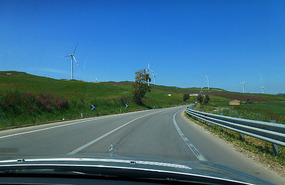
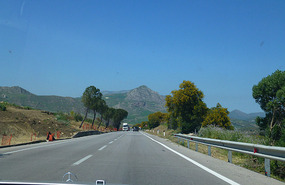

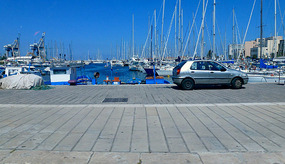
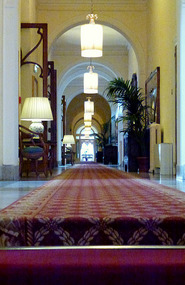
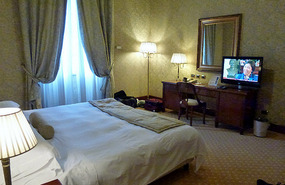
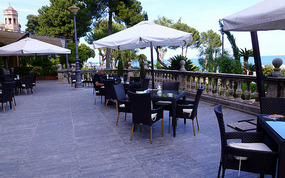
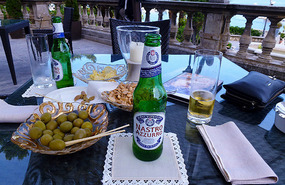






2025-05-22